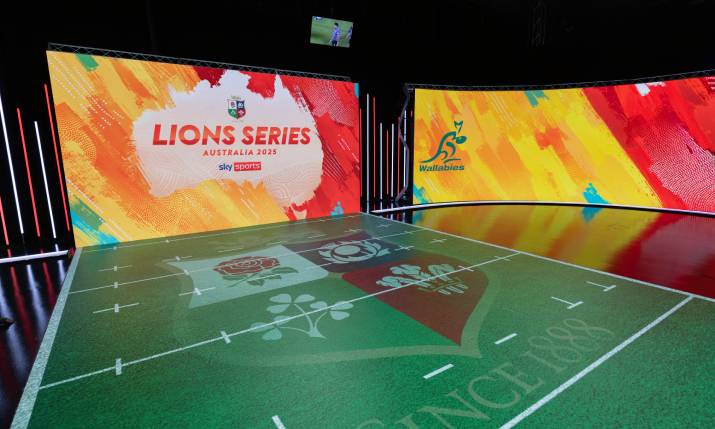From the Fifa Club World Cup to the Uefa Women’s European Championships, Wimbledon, the US Open, and the Tour de France, Summer 2025 will be packed with unmissable sporting moments from across the world. And with each nail-biting finish, record-breaking sprint, tearful medal ceremony or underdog victory, the power of sport as a cultural connector – and marketing vehicle – grows.
These sporting moments are more than just athletic achievements: they’re shared global experiences. And they’re only becoming more accessible and popular as ratings soar and conversations race around social media. For brands, it’s a winning opportunity to reach, engage and acquire audiences.
Why are sports fast becoming marketing’s new power play? And how can marketers capitalize on their magic moments?
Want to go deeper? Ask The Drum
All eyes on the game
Live sport is bucking every trend in traditional media. While TV ratings across most categories have tanked (down 26% since 2015 in the UK), sports are an exception. In the UK, ratings have only dropped by 3% in the last 10 years. And in the US, over 90 million viewers tune in to streamed sports at least once a month – up from 57 million in 2021.
The boom is largely thanks to expanded digital access and tech innovation. Fans now watch across devices like smartphones and consoles. Streaming platforms such as Amazon Prime and Espn+ which offer flexible, personalized viewing, are outpacing traditional TV. And broadcasters are enhancing experiences with augmented and virtual reality, and AI delivering real-time stats and predictive insights.
Playing the field – appealing to the new sports fan
These advancements, combined with rising investment in sports rights, are broadening global reach and drawing in younger, more diverse audiences. And those audiences are redefining viewership.
They follow players, causes, and creators – not channels or schedules – and expect personalized, culturally relevant experiences. They don’t just watch – they connect, share, comment, and buy.
Ralf Ollig, vice president of product – ad:s, from global sports technology brand Sportradar says: “In an age where attention is fragmented, sport offers a rare chance to reach people in emotionally charged, undivided moments. To connect with these fans, brands must be part of the moment, not outside observers.”
Timely, relevant cultural alignment isn’t optional: it’s essential for driving awareness, engagement, and purchase intent. Brands that respond quickly to cultural events see a 23% jump in purchase intent when acting within a week.
A new marketing playbook
As more people tune into sports, the sports marketing industry is booming. Traditional sponsorship still matters, but the highest returns now come from agile, data-informed activations that meet fans in their digital worlds, at the right moment, in the right format.
The global sports tech market alone is projected to grow by 21% annually, reaching over $40 bn by 2026. And brands from a wide range of sectors are increasingly investing in technologies like data analytics and fan engagement tools to better understand and connect with audiences.
The big change here is that brands no longer need massive teams and budgets to capitalize on the marketing potential of sporting moments. With a multi-channel approach, the latest programmatic technology, dynamic creative optimization tools, and fueled by extensive sports data, even niche moments can be monetized and amplified quickly.
The tech game-changer
The new sports adtech and martech era is helping brands not just show up, but do so with intelligence, speed and precision. For instance, Sportradar’s marketing services offers digital ads that dynamically adapt to sports moments and audiences, thanks to proprietary sports marketing technology and more than 20 years of sports data. Real-time insights into fans’ behavior, location and preferences combine with live sports data integrations to deliver ads as the action unfolds. Say, for example, a footballer scores in the final minute of an upcoming Fifa Club World Cup match: the tech can help brands react instantly, triggering hyper-targeted ads that capitalize on that exact moment – driving relevance and emotional resonance at the same time.
Tools like this also serve up greater brand exposure during games, offering improved ROI on sponsorship through enhanced digital activation. Meanwhile, real-time scores, stats and player insights can be used to fuel content marketing and advertising, making brand touchpoints more engaging and immersive.
For example, a high-profile team sponsor of a prominent NASCAR team worked with Sportradar to nearly double clickthrough rates for campaigns that leveraged race day moments versus standard campaigns. The campaigns’ creatives showcased the current, live race positions of sponsored drivers, ensuring ads were hyper relevant and engaging.
Ollig says: “This is a whole new sports marketing playbook – one that goes beyond mass exposure and into the realm of intelligent, real-time personalization. Brands now have the opportunity to tap into unprecedented levels of attention, emotion, and engagement. With the right tech, they can not only show up for the big moments, they can own them.”
Game tactics for marketers to capitalize on the summer of sport
-
Move fast: The cultural window to make an impact is short. Plan for sports moments proactively, with dynamic creative that leverages sports data in real-time, so that campaigns deliver instantly during the moments that matter.
-
Be relevant: Make sure campaign creative is tailored to the moment, to cut through the noise of the competitive marketplace. Dynamic creative optimization (DCO) tech can help here.
-
Use the right tools: Technology from partners like Sportradar allows you to plan, activate and optimize campaigns around key events and moments with minimal lag and maximum impact.
-
Think global, act local: Sport is global, but fandom is personal. Localization, backed by data, enhances resonance.
For more advice on turning sports into a winning moment for your brand, contact Sportradar.

![]()
































































